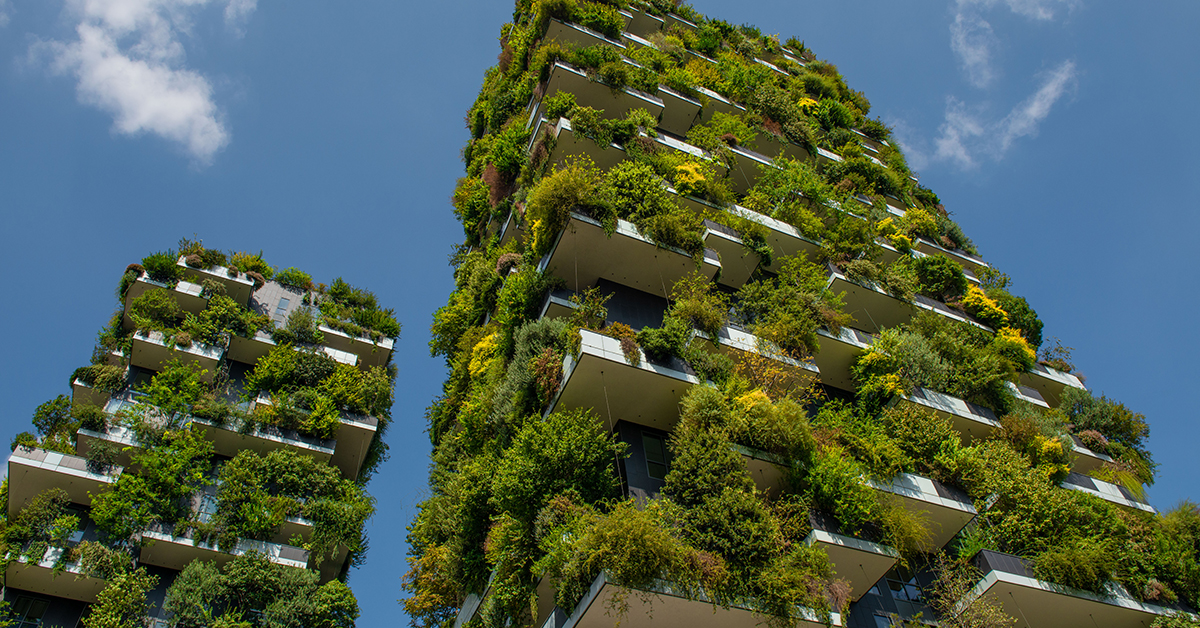It is always a question of whether we are able to live comfortably without harming the environment. As the climate changed, we started to evolve and seek help from natural resources, and now it’s time to preserve them for future generations. So, here comes green recognise which explores glimpses of possible futures. Even people started to believe in and try their own methods of building green environments. The B planning Colleges recorecognise value of green architecture and encourage students to learn about it in the start of their studies. Let’s architecture garchitectureein detail andl gre its significance.
To begin, What is green architecture?
Green architecture uses new technologies to try to reduce the negative effects of building design, construction, and use on the natural environment and living communities. This helps keep their quality of life for generations to come.
Nowadays, graduates from B.plan colleges in India are expected to have the knowledge and skills to build designs in a sustainable way. The utilisation of natural resources like minerals, organic life, and energy sources is necessary for the development of human settlements.
Consuming and acquiring these resources harms ecosystems that have developed over long periods of time, leading to more pollution and lower productivity. The design of green architecture proposes that construction should be carried out in a sustainable manner.
What are the benefits of green architecture?
As already mentioned, if you intend to begin your career in green architecture, you need to have a professional degree from one of the top B Arch Colleges of Architecture and Planning in India. Here are the reasons and benefits that students should have experience in green architecture.
- Cost reduction: Buildings built with green architecture use fewer resources for everything from operations to maintenance. The lower cost of upkeep may prove to be very beneficial and profitable over time. They are designed to use less energy, resulting in lower utility bills for water and lighting. It’s important to remember that green buildings can be more expensive to build at first than regular ones, but they eventually pay for themselves.
- Energy: Efficiency in energy use will not only help the environment but also cut costs for the building. Additionally, the objective of green architecture is to lessen the dependence on energy for essential services. The use of large windows and ceiling windows lets in natural sunlight, lowering the need for artificial lighting. In the event that the building does have air conditioning, the walls, floors, and ceilings are properly insulated to prevent energy waste within the building.
- Retain Water: This practise can save water for future generations while using less water with the help of new technological advancements. Green architecture buildings have low-flow showerheads, ultra-low flush toilets, rainwater recycling systems, and so on, to save the most water possible. They also set up a water purification and recycling system for on-site irrigation.
- Use of materials: The practice’s primary objective is to produce as little waste as possible in comparison to conventional buildings. This practice makes use of non-toxic, reusable, renewable, recyclable, and recyclable materials in order to achieve material efficiency. Some sustainable materials include recycled metal, dimension stone, bamboo, straw, ecology blocks, and others. These materials are said to utilise less water and energy, which are extra advantages for being eco-accommodating.
- Ensure oxygen quality: We are aware that good indoor conditions will result in good air quality, which will safeguard the health of those inside the building. Utilizing eco-friendly materials improves the quality of life for building occupants as well as reduces environmental stress. When you use artificial lighting and don’t have enough ventilation, you let harmful gases into the building.
“Green Architecture” followed in Ancient Period. How?
Buildings that blend in with the natural environment are definitely not recent developments when they are very old. It employs a variety of strategies and methods to live in harmony with natural rhythms. The architecture courses you studied at B Arch Colleges in Tamilnadu may have given you an idea of ancient methods.
Ancient architects who practised green architecture included the ice pit (designed in a way to sustain even temperature fluctuations). Deserts are extremely hot during the day, but because of the low humidity, the temperatures drop quickly at night. So, this ice pit was designed and used before electric refrigerators came along. In some places, it is still used.
In Today’s World of Green Architecture :
When we look back at what our ancestors were able to do with simple technology, we might be able to do much more today if we think more analytically when designing buildings. Thus, the characteristics of green construction are:
- Ventilation systems are made to work efficiently.
- Appliances and lighting that use less energy.
- Planning to make the most of passive solar energy.
- Landscaping with native vegetation.
- Solar and wind power are alternative sources of renewable energy.
- Materials used both inside and out that are not made of synthetic materials and are not harmful.
- Utilization of recycled building materials.
- Ideally situated on the land, allowing for maximum exposure to sunlight, winds, and natural shelter.
You can study and can get practical experience during the architecture course. B Arch Colleges in Tamilnadu expect to get the certification from the NCARB where this licenced certificate allows the architects to work in other states also. Now, the industry expects architects to follow sustainability. It is still crucial at every stage, from obtaining and processing materials to recycling them. Designing eco-friendly structures is the primary objective of green architecture.






